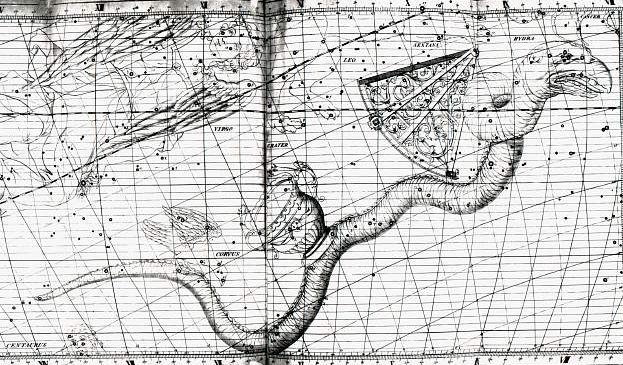|
1. A pair of noteworthy constellations low down are Crater and Corvus:
They are resting on either side of a deep bend in Hydra, here in Flamsteed's version. Higher up and earlier - behind the 'knot', Ukdah, - is a modern construction, Sextans, with hardly any noteworthy stars. The peculiar 'horns' of Hydra suggest also they could belong in some other constellation, perhaps Cancer:
"δ, ε, ζ, η, ρ, and ς, 3rd to 5th magnitudes, on the head, were Ulug Beg's Min al Az'al, Belonging to the Uninhabited Spot." (Allen) The 'Unhabited Spot' is presumably the area between the Milky Way and Alphard (at the top of the mast of Argo Navis), and if Ulug Beg was correct, then the 'horns' of the Hydra could be the 'crown', so to say, of the Uninhabited Spot: .jpg) We have earlier (at Alphard) coordinated the time of this 'crown' of the Uninhabited Spot with glyphs and it is not uninhabited - though mostly populated with 'spirits', a swarm of them presumably returning to their hive ('house'):
I prefer to leave ζ Hydrae outside this crown:
Also Crater is attatched to Hydra, while Corvus (the Raven) hovers above. |
||||||||||||||||||||||||||||||||||||||||||||







